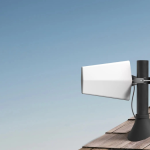Within this hectic world, the hunt for effective ways of handling stress continues. We look to numerous sources to find the right answer; practicing meditation, breathing exercises, resorting to costly retreats, and reading all those ‘helpful’ books. But most of these friendly suggestions and run-of-the-mill answers seem at a loss to cope with the absolute pressure in the present time. The innovative trial of experimental methods in handling stress tries to look beyond the usual techniques, different from some less-typical options grounded in evidence. These can work even when the conventional ways fall short.
When the Conventional Fails
A typical stress-management roster consists of time-tested suggestions for exercise, sleep, mindfulness, and diet. These are necessary, though they falter when an abyss of stress beams down. Most often, these practices are already too demanding to replicate when a genuinely stressful situation is in one’s face.
Let’s explore the evidence-based stress management techniques that offer relief when conventional methods fall short.
1. The Environmental Reset
Our surroundings profoundly influence our stress levels in ways we rarely acknowledge. Environmental psychology research suggests that small adjustments to our physical space can create significant shifts in our emotional state.
One powerful intervention involves strategic exposure to natural elements. Brief interactions with nature—including looking at natural scenes—can lower cortisol levels. Rather than planning elaborate outdoor excursions, try keeping a collection of high-resolution nature photographs on your phone for quick stress resets.
Color psychology also offers accessible interventions. Spaces dominated by red and orange hues can subtly increase tension, while environments featuring blue and green tones tend to promote calm. A ten-minute room rearrangement or the supplement of a blue throw blanket might deliver more immediate stress relief than an hour-long relaxation exercise.
2. The Paradoxical Relaxation Technique
Sometimes, directly attempting to relax creates additional pressure. The expectation to calm down can itself become another stressor. This phenomenon has led to paradoxical approaches that avoid this counterproductive cycle.
Scheduled worrying represents one such method. By allocating a specific 15-minute period each day dedicated exclusively to worrying, you contain anxiety rather than attempting to eliminate it. This structured approach helps participants reduce intrusive worrying throughout their day.
Similarly, therapeutic discomfort training involves deliberately exposing yourself to minor, controlled discomforts (like brief cold showers or temporarily postponing a cup of coffee) to build resilience against larger stressors. This approach develops your capacity to tolerate discomfort without becoming overwhelmed.
3. Social Connection Recalibration
While social support is widely recognized as stress-protective, the quality and nature of our connections matter more than the quantity. Research from UCLA demonstrates that meaningful conversations—even brief ones—provide significantly greater stress protection than superficial interactions.
Experimenting with connection types reveals surprising findings: sometimes, a casual conversation with a stranger provides more effective stress relief than interactions with close friends or family members who may bring their expectations and dynamics.
Digital boundaries also play a crucial role in stress management. Moving social media apps to the second screen of your smartphone (requiring one additional tap to access) reduced average usage time and lowered stress levels.
4. Artistic Expression Without Pressure
Creative outlets have long been recognized for their therapeutic potential, but conventional approaches often come with performance expectations that can increase stress. A more effective approach removes all outcome requirements.
Abstract art creation—without concern for skill or aesthetic value—provides powerful stress relief by engaging what psychologists call “flow states.” Similarly, stream-of-consciousness writing for a set period (typically 10-15 minutes) without reviewing or editing allows emotional processing without evaluation pressure.
Music offers another accessible avenue. While creating music might seem daunting, simple rhythmic activities like drumming require no prior experience yet provide significant stress-reduction benefits.
5. Microbreak Revolution
Contrary to productivity dogma suggesting deep immersion in work, strategic microbreaks may better serve both performance and well-being. Cornell University research demonstrates that brief breaks (30-60 seconds) taken every 20 minutes significantly reduce stress accumulation compared to longer breaks taken less frequently.
The content of these breaks matters. Standing near a window for 40 seconds offers more recovery than scrolling through social media for five minutes. Similarly, brief sensory shifts—such as lighting a scented candle or enjoying pre-rolled joints where legally permitted—can create mental separation that prevents stress accumulation.
6. Physicality Beyond Exercise
While structured exercise provides well-documented stress benefits, the body responds to movement in many forms. Non-exercise physical activity—spontaneous movement without fitness goals—offers significant stress-reduction benefits.
This approach includes spontaneous dance breaks, stretching without a formal routine, or even brief sessions of jumping jacks. The key distinction is removing performance metrics that can transform beneficial movement into another source of stress.
7. Cognitive Defusion Techniques
Stress often manifests through thought patterns that feel uncontrollable. Rather than attempting to change these thoughts directly, defusion techniques change your relationship with them.
One effective method involves labeling thoughts as they occur (“I’m having the thought that I’m overwhelmed”) rather than accepting them as reality. This subtle linguistic shift creates a psychological distance that reduces their emotional impact.
Another approach uses visualization—imagining stressful thoughts as leaves floating down a stream or clouds passing overhead. These metaphorical exercises reduced subjective stress ratings and physiological stress markers.
8. Sensory Interrupts
Our senses direct pathways to our emotional state, bypassing complex cognitive processes. Strategic sensory interventions can, therefore, create immediate stress shifts.
Olfactory stimuli offer powerful effects. Research published in Frontiers in Psychology demonstrates that certain scents—particularly lavender, citrus, and vanilla—activate parasympathetic nervous system responses within seconds. A portable essential oil inhaler provides on-demand access to this intervention.
Similarly, tactile interventions like brief exposure to different textures (rough, smooth, soft) can interrupt stress cycles by pushing attention to immediate sensory experiences rather than abstract worries. Keeping a small collection of textured objects available provides an inconspicuous tool for high-stress environments.
9. Community Experimental Approaches
Some of the most effective stress management innovations emerge from communities rather than research institutions. Online forums dedicated to stress management have developed interesting approaches worth consideration.
The “stress jar” technique involves writing stressors on slips of paper and physically placing them in a jar, creating symbolic containment and practical prioritization. Community members report that this tangible representation provides relief beyond digital task management systems.
“Worry exchanges” represent another community innovation. Sharing specific concerns with a trusted person who agrees to “hold” them temporarily creates both social connection and psychological unburdening. While lacking formal research support, anecdotal evidence suggests significant benefits.
Keeping Track of What Works for You
The most significant experiment might be keeping a personal record. Stress responses are highly individual, and therefore, interventions can vary widely. A mere bookkeeping of activities and their implications would create one personal inventory of the stress management toolkit.
Tracking helps reveal patterns that otherwise remain obscured; for example, morning works for some, afternoon works for others, and evening works for some. Similarly, some techniques may be more effective with some sources of stress rather than general anxiety.
Finding Your Stress Solution
The search for a workable stress management scheme becomes a very personal trial-and-error journey. One way may not be useful in one stage of your life, as with everything, during another. Something that helps with work pressure might be the opposite of how to deal with stress in a relationship.
Real resilience isn’t having the perfect solution but building a diverse set of strategies for one’s needs. This experimental approach of trying, documenting, and refining gradually changes the posture from stressed-out questing for universal tricks to empowering self-discovery through stress management.
The most exciting part of the research on stress is not the specific tactic but the permission to customize one’s approach. Thus, in a culture that often offers one-size-fits-all solutions, creating such individual strategies would become both a practical necessity and a radical act in terms of self-care.
Lynn Martelli is an editor at Readability. She received her MFA in Creative Writing from Antioch University and has worked as an editor for over 10 years. Lynn has edited a wide variety of books, including fiction, non-fiction, memoirs, and more. In her free time, Lynn enjoys reading, writing, and spending time with her family and friends.















